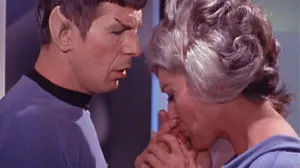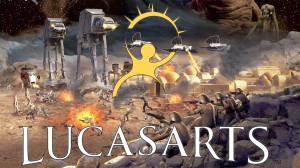When it first aired in 1995, Star Trek: Voyager officially became the fourth spin-off of the Star Trek Franchise, following in the footsteps of The Animated Series, The Next Generation and Deep Space 9. However, it quickly set itself apart, introducing a new crew stranded 70,000 light years from home in the Delta Quadrant, commanded by Star Trek’s first female Captain, Kathryn Janeway, who proved herself more than worthy of the title, navigating uncharted space with limited resources and no backup from Starfleet. Over seven seasons, the series delivered a mix of truly ambitious sci-fi ideas, character-driven drama, and quirky holodeck escapades.
Videos by ComicBook.com
These ten episodes showcase Voyager at its most imaginative, emotional, and memorable. Whether you’re experiencing these stories for the first time or revisiting them on a rewatch, they’re essential viewing for any Trek fan.
10) Season 2, Episode 25 – “Resolutions”
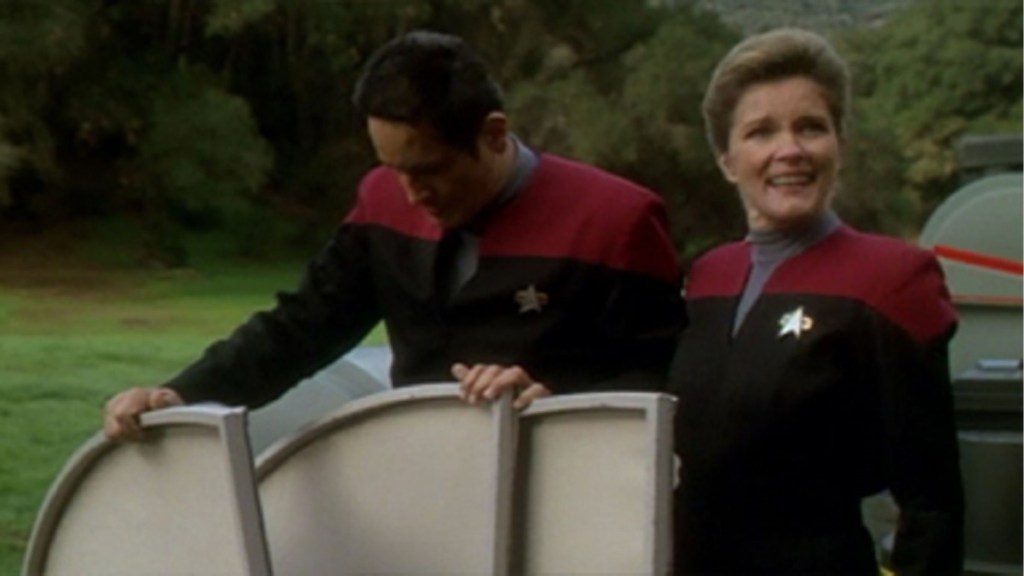
After contracting an incurable virus from the brilliantly named wassoop-insect, Janeway and her first officer Chakotay are faced with potentially living out their days on a remote planet where the atmosphere prevents the disease becoming fatal, unless a cure can be found. But while “Resolutions” starts out as a race against the clock, it quickly turns into one of the most romantic Star Trek storylines ever told. As time goes by, the pair begin to adapt to their new reality, finally having the space to explore who they are and what they are to each other without the constant pressures of command, essentially building a life together as the crew searches for a cure.
Written by Jeri Taylor, “Resolutions” is as much about the sacrifices of leadership as it is about rare alien diseases. The chemistry between Kate Mulgrew and Robert Beltran is palpable, building on hints of the characters attraction to each other in previous episodes. It’s gut-wrenching when a cure is inevitably found, reality calls, and the pair must return to the ship, upon which Janeway makes it clear that a continuation of what they started on the planet won’t be possible onboard. The episode and Janeway’s final ‘resolution’ – while in keeping with her character, sparked years of fan debate over their relationship. Chakotay’s subsequent relationship with Seven of Nine later in the show, couldn’t live up to the promise of his connection with Janeway for many fans.
9) Season 6, Episode 8 – “One Small Step”
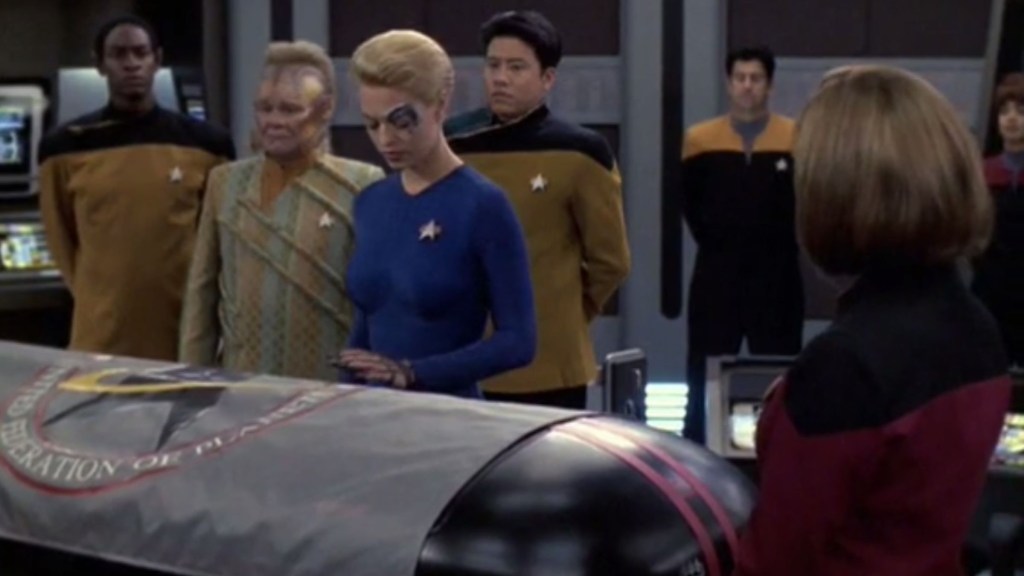
In the Season 6 Episode “One Small Step”, while scanning a subspace anomaly, the Voyager crew unexpectedly discover it contains the long-lost Ares IV, a 21st-century NASA Mars mission craft. Chakotay leads a mission to recover it, uncovering both a piece of spacefaring history and a human story lost to time when, onboard, the away team discover the personal logs of astronaut John Kelly, recorded in his final days on the doomed space craft.
This episode is a pure love letter to Space exploration, and a reminder of what Star Trek is truly about. Connecting Voyager’s 24th-century adventures to our own real life 21st century time-period and space exploration efforts, makes the series feel somehow realer than it does when fighting the Borg or other intergalactic threats. Referencing NASA brings home the idea that Voyager and its crew are humanity’s future in a more direct and heartfelt way. Kate Mulgrew delivers a beautiful performance during Janeway’s speech in the impromptu funeral ceremony the crew holds for Kelly. The crews respect for their “old colleague” of history and reverence for humanity’s first steps beyond Earth is remarkably moving.
8) Season 6, Episode 17 – “Spirit Folk”
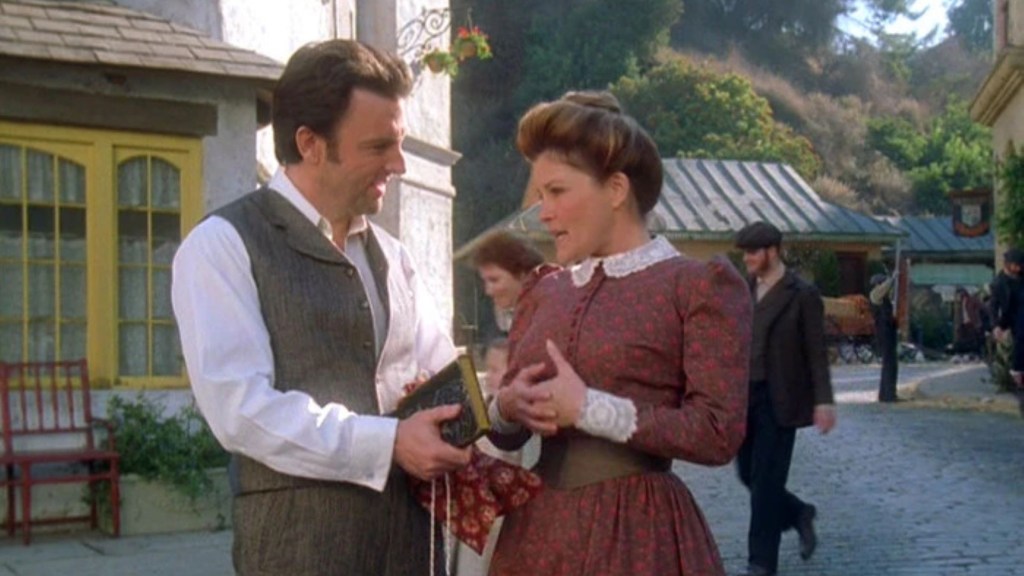
When the holographic townsfolk of ‘Fair Haven,’ a historical Holodeck program created by Tom Paris’ start to gain self-awareness, they begin suspecting the visiting crew from Voyager are actually supernatural beings meddling in their lives, due to the crew’s ability to manipulate the computer programme (which from the hologram people’s perspective looks like they bending reality at will!). What follows is a mix of quirky comedy, and a high-brow sci-fi ethical dilemma, ending in a surprisingly sweet cultural exchange.
A continuation of the episode “Fair Haven”, (which saw the introduction of the fictional holo-decked ye-olde Irish village); “Spirit Folk” leans into Voyager’s lighter side while also exploring the ethical implications of holographic sentience — a theme that runs deep in Trek. “Fair Haven,” saw Janeway form a romantic attachment with the town’s barkeeper Michael Sullivan, posing the question of the authenticity of the relationship when she deliberately edits the character to be her ‘perfect man.’ “Spirit Folk” asks bigger questions still, delving in to whether it is right for the Voyager crew to meddle with the lives of sentient beings. Eventually the crew are able to convince the good people of Fair Haven they come in peace, and the communities can coexist, but it’s certainly an episode that gets the cogs whirring.
7) Season 5, Episode 5 – “Once Upon a Time”

After a shuttle carrying crewman Samantha Wildman is lost during a mission, the usually bubbly Talaxian cook and ‘ships morale officer’ Neelix, struggles with the task of trying to prepare her young daughter Naomi (his Goddaughter) for the worst. Initially using a children’s fairytale holodeck program ‘The Adventures of Flotter’ as a distraction, he soon realises that ‘protecting’ children from the harsh realities of the world isn’t always possible or in their best interests, and he must come to terms with the difficult responsibility of telling Naomi the truth.
Written by Michael Taylor for Season 5, “Once Upon a Time” is a poignant reminder that even stranded in the Delta Quadrant, some of the hardest challenges are the more personal and ‘human’ ones. While the episode received mixed reviews and doesn’t always achieve the highest score in rankings and retrospectives, we think it’s an underrated story and a worthy edition to our list. Ethan Phillips brings genuine warmth to Neelix here, making it one of the character’s most humanizing episodes.
6) Season 6, Episode 12 – “Blink of an Eye”
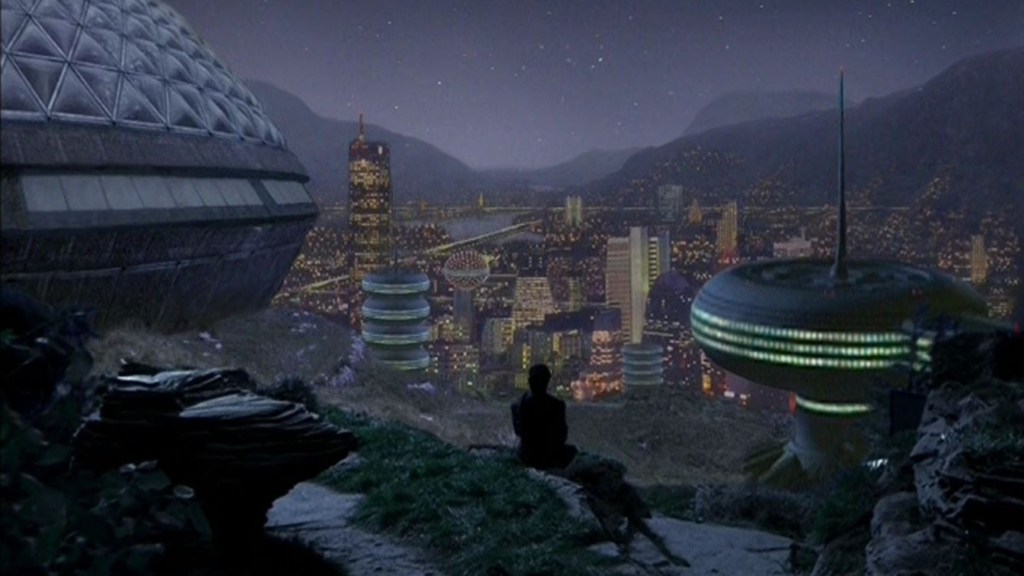
In this episode, Voyager becomes trapped in the orbit of a planet where, due to the real-world scientific effect of ‘time-dilation,’ (plus a healthy dose of sci-fi technobabble), time moves much faster on the planet’s surface than on Voyager, and the crew witnesses the planet’s civilization evolve from the ground up. Over centuries, the people below, to whom Voyager appears frozen in the sky above, come to regard the starship first as a celestial presence and eventually as an advanced race who they attempt to make contact with, finally sending two astronauts up to the ship to investigate.
Written by Joe Menosky, “Blink of an Eye,” is high-concept science fiction at its finest. It offers a bird’s-eye view of the cultural development of a civilization from humble beginnings to space travel capabilities. Simply by being there, Voyager has been responsible for the advancement of a whole society, inspiring the planet’s people to try to make it in to space and contact the “sky ship.” It’s an ambitious episode and one Voyager’s most poignant.
5) Season 5, Episode 10 – “Counterpoint”

While traveling through Devore space, where telepaths are hunted down as criminals, in Season 5’s “Counterpoint” Janeway must use the transporter buffer to hide her telepathic crew members (as well as some Brenari telepath refugees) in the transport buffer so they will not be discovered during inspections led by the charming but ultimately untrustworthy Inspector Kashyk. The result is a tense game of cat-and-mouse with high stakes. If discovered, the telepaths will be sent to a ‘relocation centre’, which many viewers saw as a thinly veiled analogy for the concentration camps of the second world war.
Often ranking high in reviews and ratings of Voyager episodes, the story is a masterclass in acting and character dynamics, made possible by Kate Mulgrew’s razor-sharp performance. The tentative trust and flirtation between Janeway and Inspector Kashyk (Mark Harelik), who claims to have had a change of heart about telepaths and want to help, shows a fine line between real chemistry and manipulation. The audience is left on the edge of their seat, as we are never quite sure if we can trust Kashyk until he shows his true (evil) colours, making this one of the series’ most rewatchable dramas.
4) Season 5, Episode 12 – “Bride of Chaotica!”
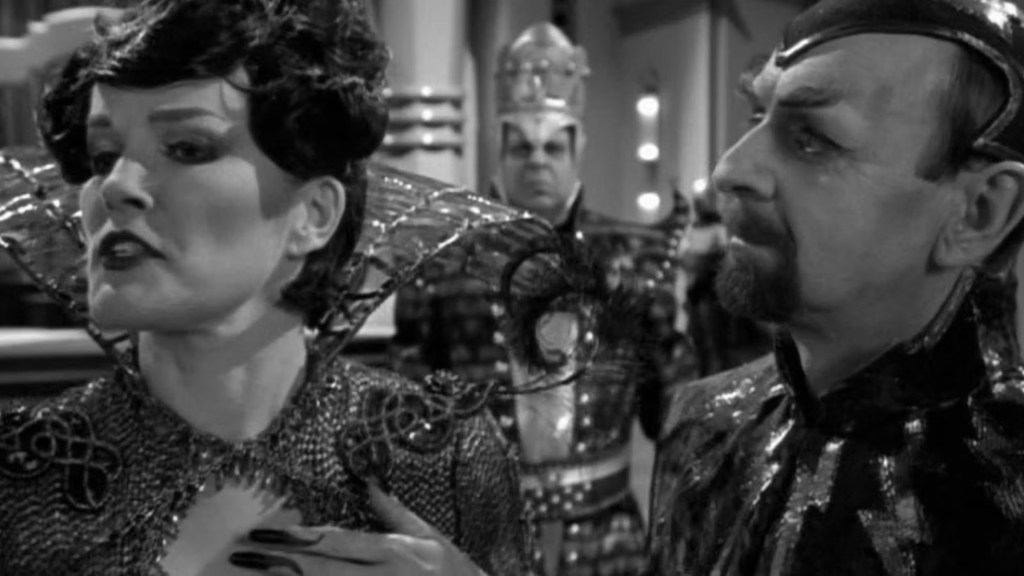
In Season 5’s “Bride of Chaotica!” when Voyager gets stuck in an interdimensional rift, photonic lifeforms from another dimension attempt to make first contact through the Holodeck, but mistake Tom Paris’ ‘Captain Proton’ holodeck program for reality, promptly entering in to battle with ‘Dr Chaotica,’ the photonic villain of the story. The crew is forced to play along in the roles of the programme to prevent interdimensional war.
We imagine it wasn’t Tom Paris’s finest hour at work when he had to ask his no-nonsense Captain to put on a sparkly number and play the classic femme fatale… Janeway reluctantly steps into the role of the villainous Queen Arachnia, and soon finds herself having more fun than anticipated, with Kate Mulgrew gleefully hamming it up to save the day. The episode is pure holodeck fun, parodying old sci-fi serials such as 1936’s Flash Gordon and 1939’s Buck Rogers and giving the cast room to play exaggerated archetypes. It’s a visual and tonal departure that still feels entirely at home in Voyager’s universe.
3) Season 2, Episode 1 – “The 37’s”
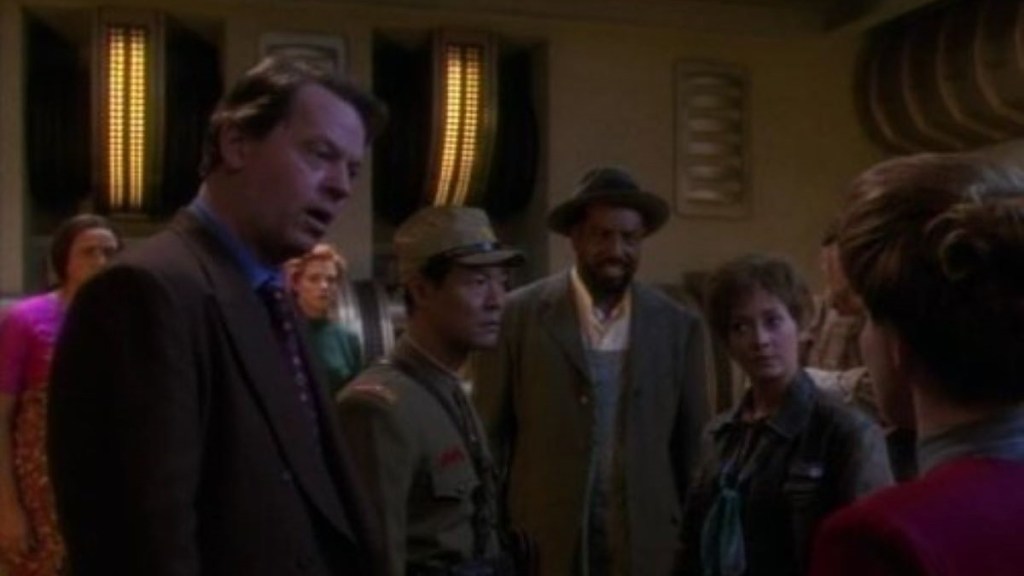
After landing on a L-class planet, the Voyager crew discovers that the descendants of a group of humans abducted from Earth by the Briori in 1937 are now living peacefully having formed their own society on the planet over generations. A small group of the original abductees — including Janeway’s personal hero Amelia Earhart — are still alive having been preserved in cryostasis. The group, known as the 37’s, wake from their sleep and after coming to terms with their new reality, they decide to remain behind on the planet rather than travelling on Voyager back to an Earth that has long moved on.
But the true crux of the episode is the moral dilemma faced by Janeway, when she must decide whether to offer her Voyager crew the same choice to stay on the planet and make a home or demand they continue their nearly 70-year journey back to Earth (given Voyager cannot be manned with less than 100 crewmembers). Eventually she decides the crew must determine their own future, making their unanimous choice to press on into the unknown all the more powerful. Originally intended to be a two-part episode bridging the first and second seasons of the show, The 37’s was subsequently re-written to be a singular episode, meaning it was perhaps less ambitious in scope than it could have been. None the less it blends real historical figures, with powerful moral storytelling, something Trek does so well.
2) Season 2, Episode 18 – “Death Wish”
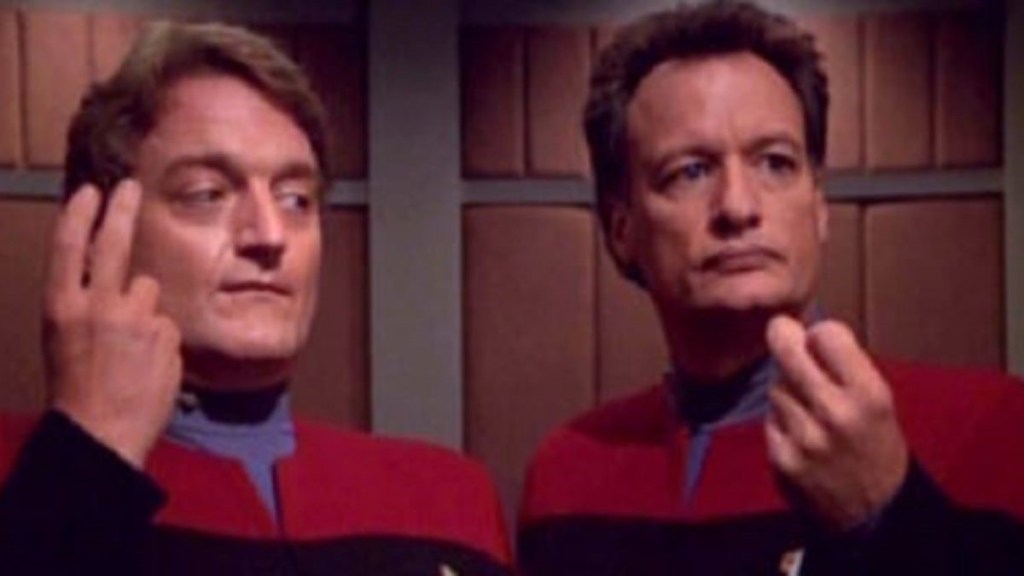
In the Season 2 episode “Death Wish,” the crew encounters a rogue member of the Q Continuum, “Quinn,” who is seeking asylum so he can finally end his immortal life against the wishes of the other Q’s. After inevitable hijinks ensure and the Q continuum seeks the opinion of a neutral party on the matter, Janeway finds herself appointed judge in a philosophical trial with cosmic implications.
Featuring cameos from John De Lancie, none other than the original Q we know and love from Star Trek: The Next Generation, and Johnathon Frakes as William Riker, the episode quickly became a fan favourite, with audiences delighted by their return. Written by Michael Piller, the episode balances the inevitable Q related humor with heavy subject matter, using Q’s omnipotence to explore the meaning of life and mortality, choice, and dignity, in what is essentially a debate on assisted dying. It’s brilliantly funny, but also, at its core, one of Trek’s most insightful episodes.
1) Season 3, Episodes 8 & 9 – “Future’s End” (Parts 1 & 2)

Future’s End” is a story with a perfect blend of action, humor, and fish-out-of-water character beats. When a 29th-century time ship Aeon, maned by Captain Braxton, drags Voyager back to 1996 Los Angeles, mistakenly believing them to be the cause of a Temporal explosion in his time, they arrive to discover tech mogul Henry Starling has gotten his hands on the 29th-century technology (which arrived on Earth 30 years earlier) and is using it to reshape the future. Whilst stopping him, the crew must blend into late-20th-century Earth — with all the hilarity and culture shock that entails.
Sarah Silverman guest-stars as astronomer Rain Robinson, who detects and attempts to make contact with Voyager, and whose rapport with Tom Paris adds charm to the time-travelling chaos. One of Voyager’s best two-parters, it’s both a high-stakes sci-fi action romp and a showcase for the ensemble’s chemistry.
All seven seasons of Star Trek: Voyager are streaming now on Paramount+.
What’s your pick for the best Voyager episode? Let us know in the comments!



